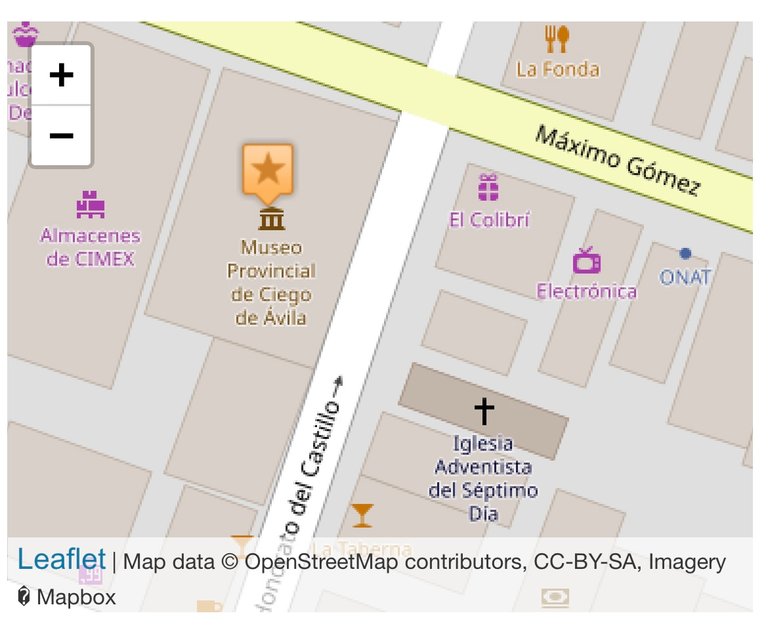
Interesante 🧐, ¿verdad? ¡Acompáñame!
Hello traveler friends of the Pinmapple community, in my first post I come to share with you, an exhibition something different from what I publish in my blog. Well, this week I dedicated myself to visit: The Simón Reyes provincial museum, historical heritage of my city Ciego de Ávila, Cuba 🇨🇺 considered one of the most emblematic constructions of the colonial architecture of the 19th century.Interesting 🧐, isn't it, come with me!

Las puertas son abiertas al público de lunes a sábado con horarios 8:00 am - 4:00 pm y los domingos hasta el mediodía 12:00 pm. La entrada tiene un costo de 2 pesos moneda nacional, pero si eres menor de 18 años o estudiante no pagas.
First of all, when you enter the museum you are attended by two very polite ladies who write you down in a visitors' book 📖, where you leave your signature as a trace of your encounter.
The doors are open to the public from Monday to Saturday from 8:00 am - 4:00 pm and on Sundays until noon 12:00 pm. The entrance fee is 2 pesos national currency, but if you are under 18 years old or a student you do not pay.



This jewel was inaugurated on March 13, 1983. The building is mustard yellow with a typical Avila porch, colonial style buildings, with fabulous roofs, Creole tiles, cast iron railings with hierarchical mode and lucetas in the front and side windows that elegantly guard the premises. Many parts of the floor in the interior are mosaics of their time, and have never been modified.



El nombre se relaciona a un patriota de la provincia, que se incorpora a las luchas por la independiente desde muy joven (10 años), participando en varias guerras por la soberanía de Cuba, el cual fue asesinado y conocido como “El Águila de la Trocha”.
El centro cuenta con servicios mensuales de atención docente, charlas, conferencias, extensiones culturales y actividades de animación 🧾, con sus días específicos y horarios establecidos.
Before becoming a museum, it was firstly, according to historians, where the Military Command of the Júcaro to Morón Trail was located (I will explain this part step by step later on).
The name is related to a patriot of the province, who joined the struggles for independence at a very young age (10 years old), participating in several wars for the sovereignty of Cuba, who was killed and known as “El Águila de la Trocha” (The Eagle of the Trail).
The center has monthly teaching services, lectures, conferences, cultural extensions and animation activities 🧾, with their specific days and established schedules.

Bueno, dentro del museo se encuentran seis salas cuyos temas se reparten en: arqueología, colonia, república, logros de la revolución y sincretismo religioso.
What secrets are hidden behind its walls?
Well, inside the museum there are six rooms whose themes are divided into: archeology, colony, republic, achievements of the revolution and religious syncretism.

The room we will cover in the first meeting is: Archaeology, where I will make a tour of the valuable Mesoamerican and Cuban aboriginal archaeological collections, highlighting the pieces of area "Los Buchillones", an exceptional site, located northwest of the province.



1er Plano / 1st Plane
The first part of the room covers the contributions of the first Mesoamerican cultures, which the nation of Mexico donated to the museum. These ancient cultures, very advanced, were rich in crafts, sculptures, geometric paintings and images of gods, characterized by the carving of stones in their works, in addition to their interesting politics and religions.
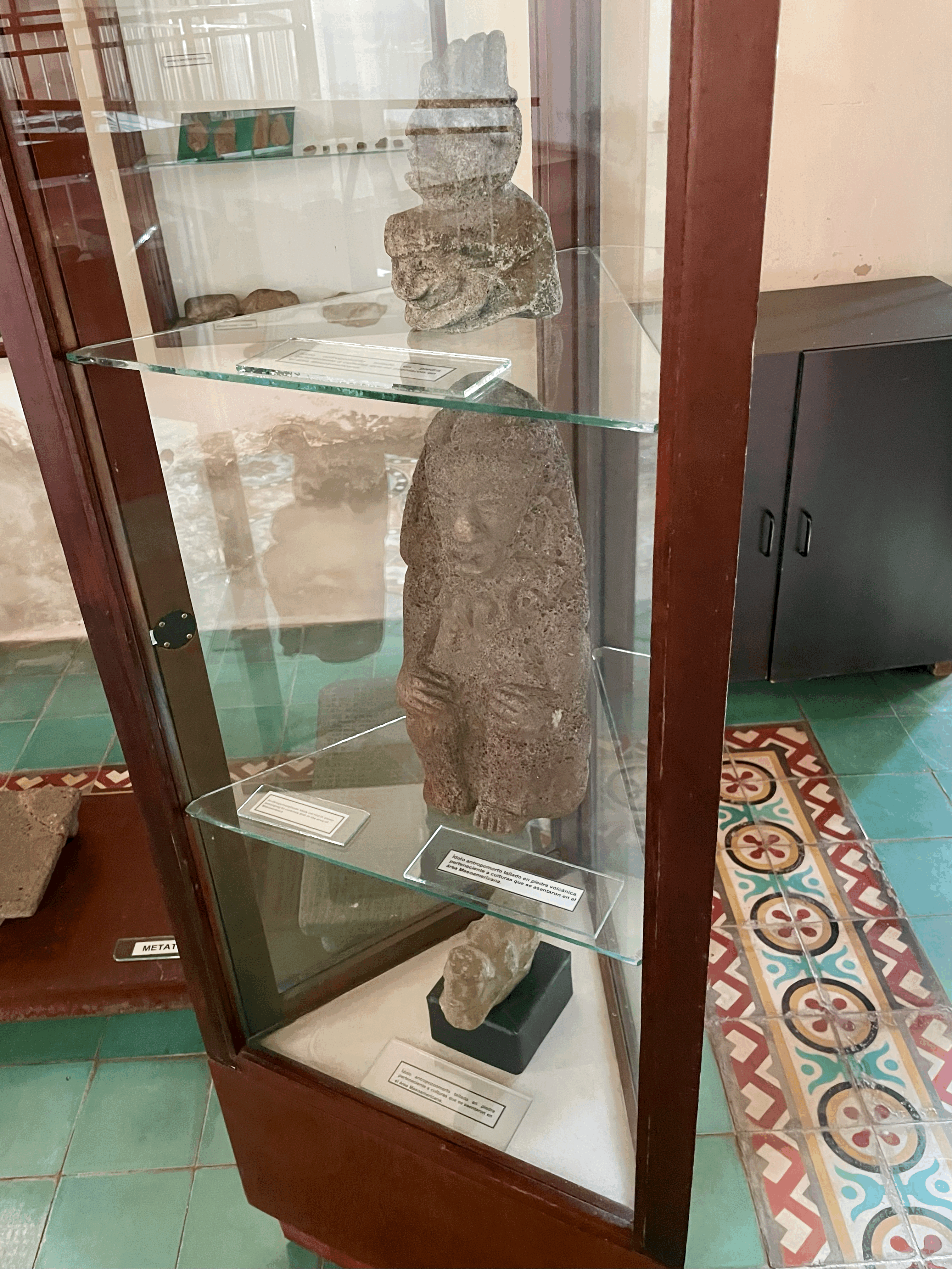
Son esculturas talladas en piedras preciosas de la cultura mesoamericana, con sus ojos, rasgos diferentes y detalles únicos del arte prehistórico. Combinan características humanas y animales. Muy creativos estos primeros habitantes ¿no crees!🤔
Anthropomorphic and Anthropozoomorphic Idols
They are sculptures carved in precious stones of the Mesoamerican culture, with their eyes, different features and unique details of prehistoric art. They combine human and animal characteristics. Very creative these early inhabitants don't you think!🤔


La siguiente vitrina expone objetos, fragmentos y culturas artesanales pertenecientes a habitantes asentados en áreas mesoamericanas. Con clásicos objetos cerámicos, tanto religiosos y particulares de ellos, que impresiona lo llamativo que trabajan el arte para su época.
Religious and Aztec objects
The following showcase exhibits objects, fragments and craft cultures belonging to inhabitants settled in Mesoamerican areas. With classic ceramic objects, both religious and particular of them, which impresses how curious they work art for their time.


Este mueble acristalado fue el que más me impactó, muestra una cabeza reducida de la tribu sudamericana, correspondiente a un joven guerrero de 14 y 15 años. Lo curioso 🧐 es ver cómo les cosían sus bocas y llegaban al nivel de reducir su cráneo. ¡Interesante!
South American Indian
This glazed piece of furniture was the one that struck me the most, it shows a reduced head of this tribe in South America, corresponding to a young warrior of 14 and 15 years old. The curious thing 🧐 is to see how they sewed their mouths and got to the level of reducing their skull. Interesting!

These two showcases that I will show you are instruments designed by the aboriginal communities of Cuba 🇨🇺, also donated to the museum exhibition by several provinces of the nation.

Estas herramientas se utilizaban para triturar ciertos materiales semi-blandos, aprovechando recursos comestibles de origen vegetal y animal.
Dyeing stones, mortars and pestle and pestle stones
These tools were used to grind certain semi-soft materials, taking advantage of edible resources of plant and animal origin.

Se muestra como estos aborígenes fabricaban a través de grandes caracoles marinos artefactos con bordes filosos, empleados para percutir también distintos materiales.
Handmade picks made with conch shells (Strombus gigas) 🐚
It shows how these aborigines manufactured through large sea shells artifacts with sharp edges, used to percuss also different materials.


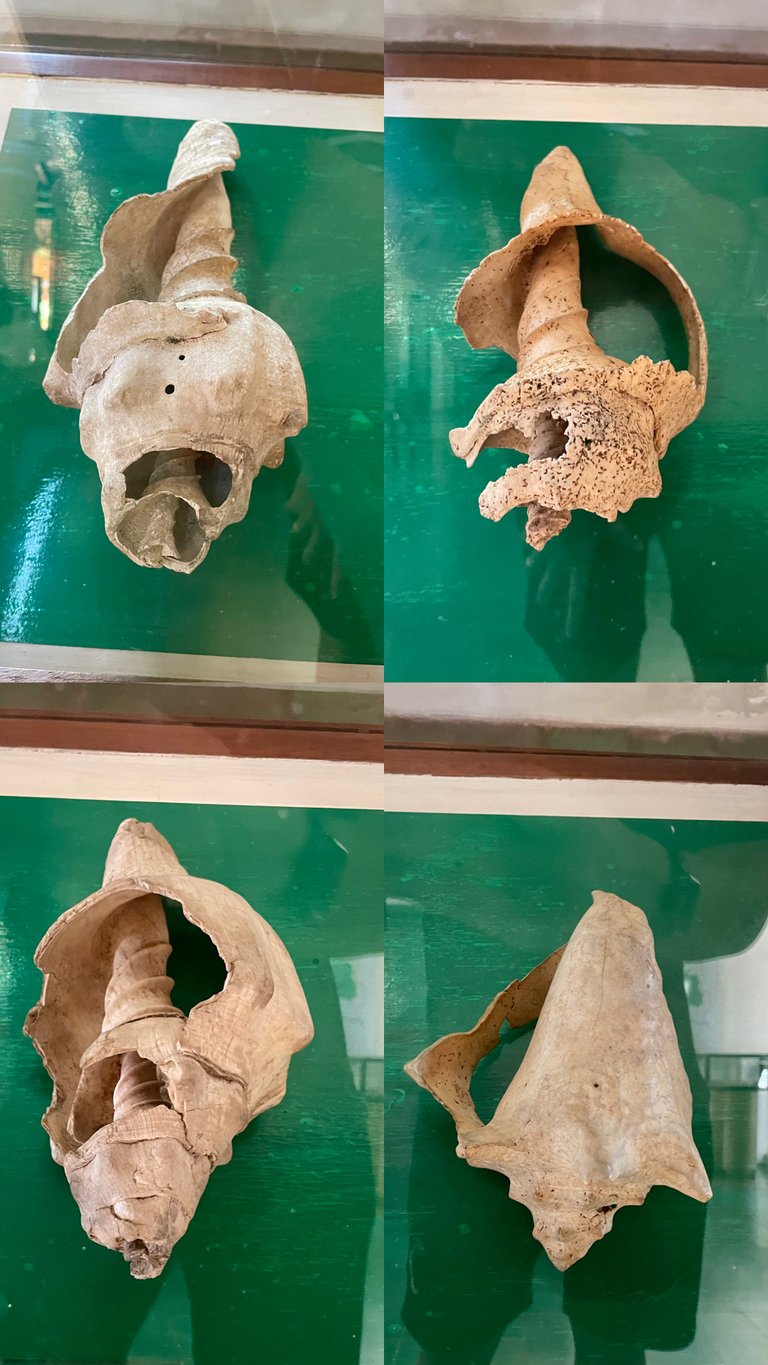
2do Plano / 2nd Plane
Desde el punto de vista museográfico sé destaca el foso, tallas de hueso, piedras, cerámicas, conchas, ídolos religiosos y de fertilidad, hachas petaloides, collares, amuletos, colgantes, entre muchas más artilugios interesantes, donde se simula una excavación, y se exponen las evidencias, una parte de ellas tal y como aparecieron bajo agua a finales de los noventa del siglo XX.
In this second part of the room we will cover everything related to one of the most interesting archaeological sites of the insular Caribbean given its abundant and unusual evidence in wood. Located on the north coast of the province of Ciego de Avila, in the Buena Vista Bay, near the town of Punta Alegre.
From the museographic point of view, the moat, bone carvings, stones, ceramics, shells, religious and fertility idols, petaloid axes, necklaces, amulets, pendants, among many more interesting artifacts, where an excavation is simulated, and the evidence is exhibited, part of them as they appeared under water in the late nineties of the twentieth century.

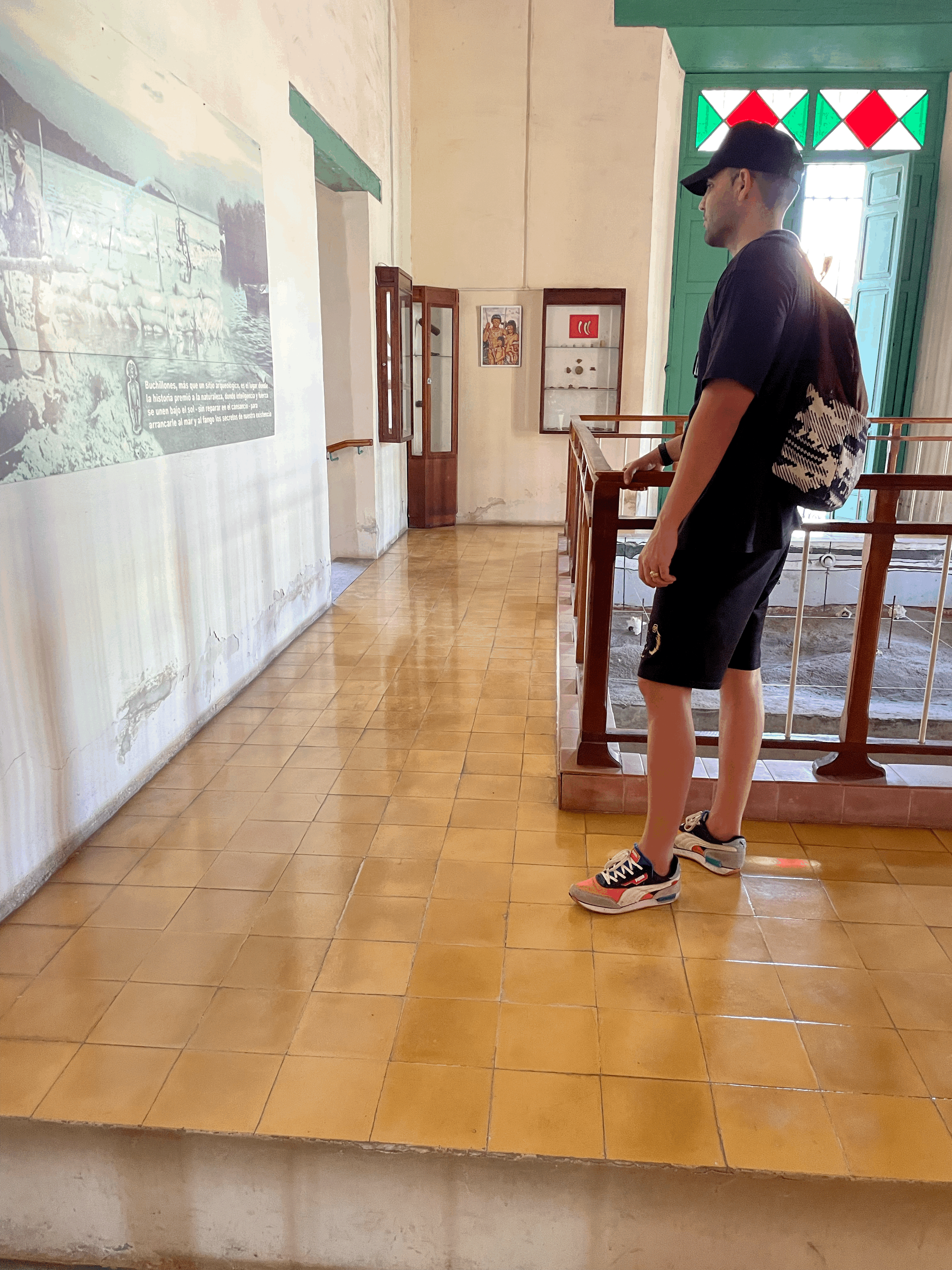

En el piso superior, una espaciosa galería que ofrece artefactos, y el foso detallado con evidencias encontradas en la costa norte sobre la vida de los taínos asentados.
The following images show the findings at the site:On the upper floor, a spacious gallery offering artifacts, and the detailed moat with evidence found on the north coast about the life of the settled Tainos.


Estas gubias no eran más, que herramientas que utilizaban para talar árboles y hacer más fácil los trabajos en maderas.
Pendants, earrings and shell gouges
These gouges were nothing more than tools used to cut trees and make woodworking easier.



Estos trozos de cerámicas fueron en algún momento, artefactos como Potes, ollas, cuencos, escudillas y otras vasijas religiosas.
Fragments of pots and handles decorated with ceramics
These pottery shards were once artifacts such as pots, pots, bowls, bowls and other religious vessels.



Estos objetos de maderas, según la museóloga, eran utilizados para el acto sexual, con asientos ceremoniales que destacaban sus tributos eróticos.
En este tema me reía con la muchacha a la hora de explicar, ya que daba un poco de pena 😄 jjj.
Religious and fertility idols
These wooden objects, according to the museologist, were used for sexual intercourse and ceremonial seats highlighting sexual tributes.
I was laughing with the girl when it came to explaining 😄😄😄😄 jjj.

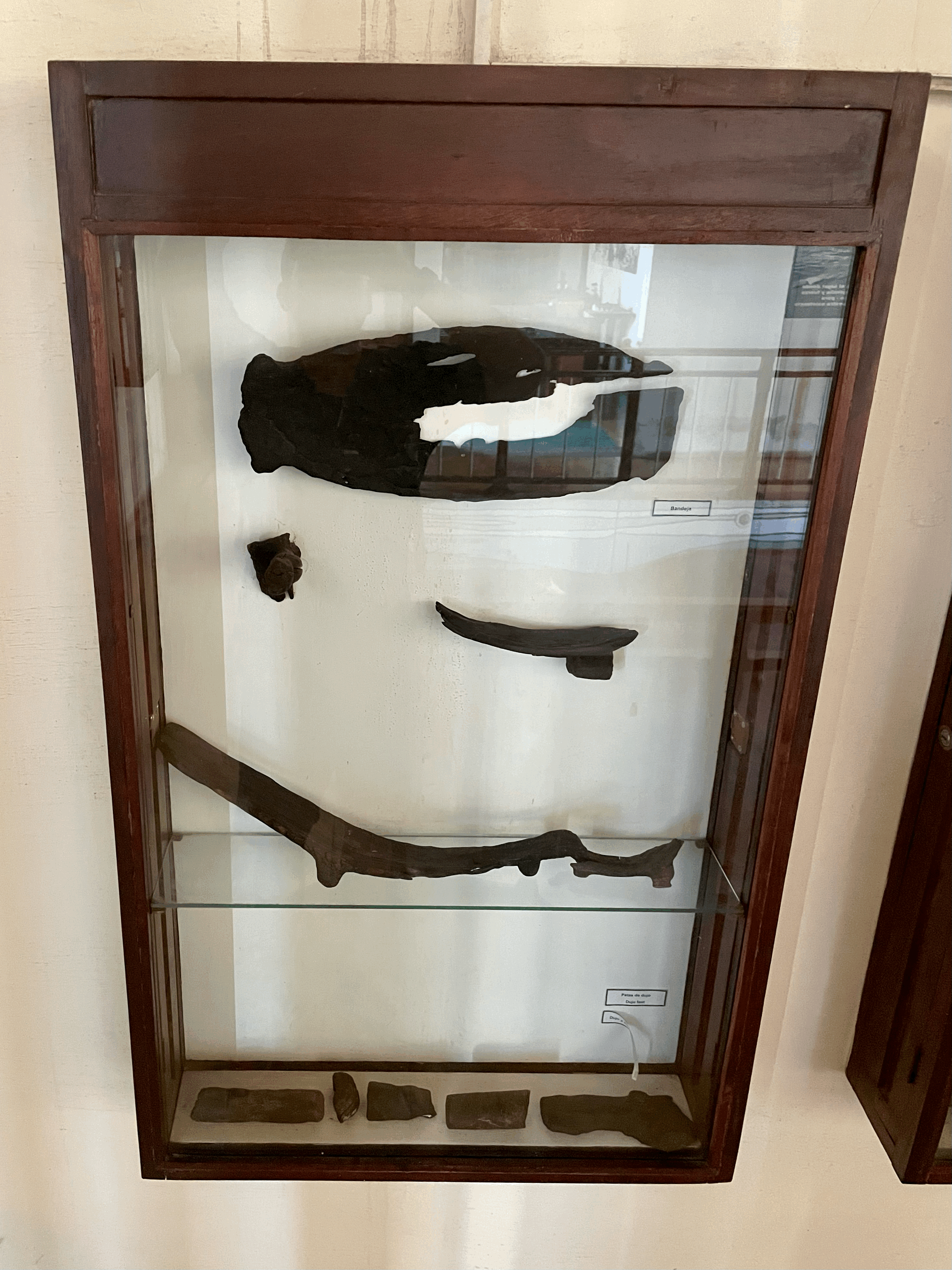

Estos instrumentos los empleaban para la caza, la pesca, ritos religiosos y como armas de defensa.
Handled axes, burins and petaloid axes
These instruments were used for hunting, fishing, religious rites and as defense weapons.


Estas herramientas eran usadas por estos nativos para la cacería, cortar tejidos, desollar animales y la pesca, no sólo para defensa, se dice que incluso las lanzas eran usadas por niños en la primera fase de entrenamiento.
Spears, darts or throwing weapons and wedges
Also used by these natives for hunting, cutting fabrics, skinning animals and fishing, not only for defense, it is said that even spears were used by children in the first phase of training.
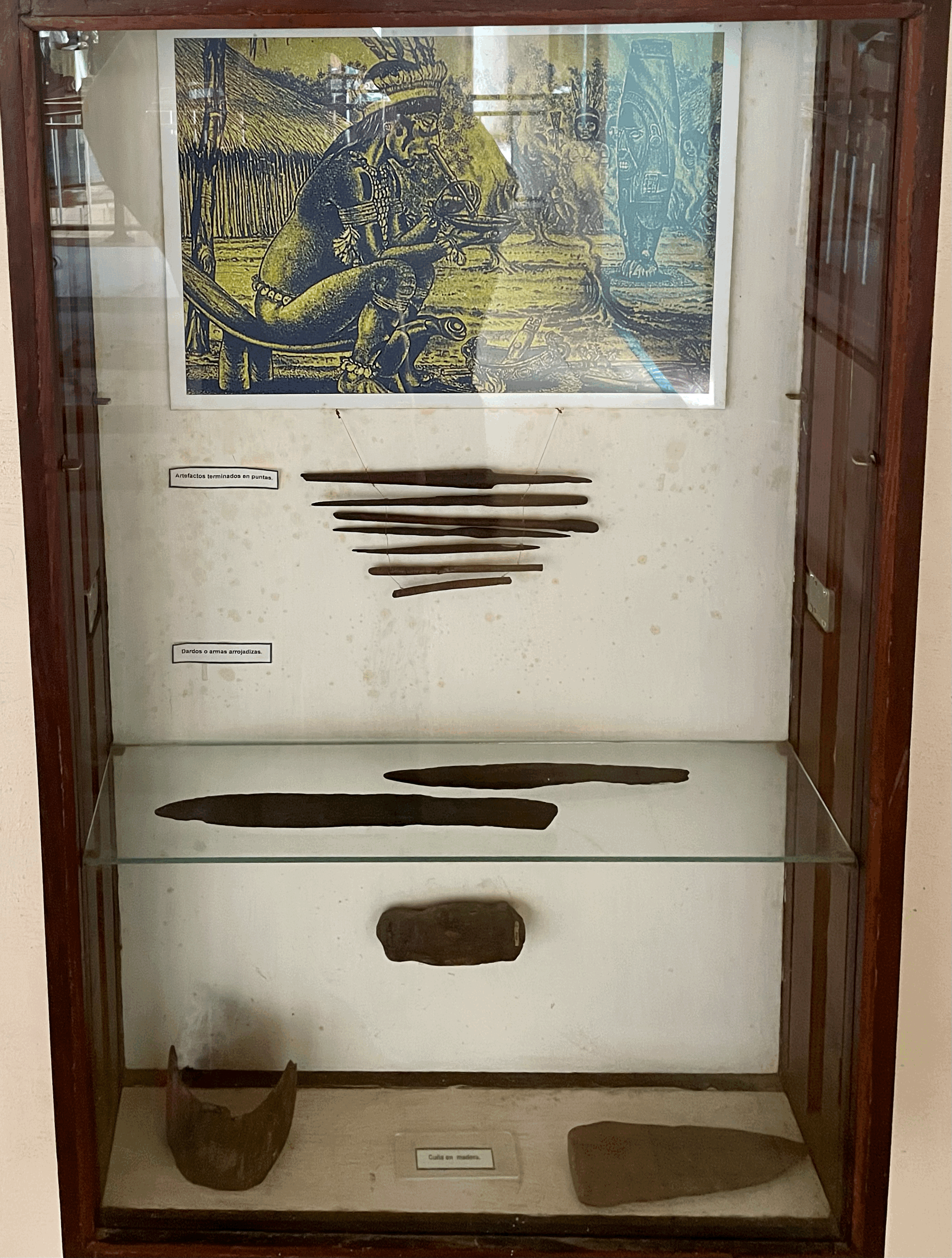
Se dice que estas utilidades son más bien, para símbolos de jerarquía o mando en las tribus.
Lithic daggers, necklaces and spheroliths
It is said that these utilities are rather, for symbols of hierarchy or command in the tribes.


Ya en la culminación de este paseo por la historia que centra el asentamiento aborigen en mi ciudad. Estas muestras de rocas sílex muy duras que se fragmentan en láminas cortantes, idóneas para tallarlas, realizando los ya mencionados cuchillos, buriles, puntas de flechas, etc.
Retouched blades and flint cores
Already in the culmination of this walk through the history that focuses the aboriginal settlement in my city. These samples of very hard flint rocks that are fragmented into cutting blades, suitable for carving, making the aforementioned knives, burins, arrowheads, etc.

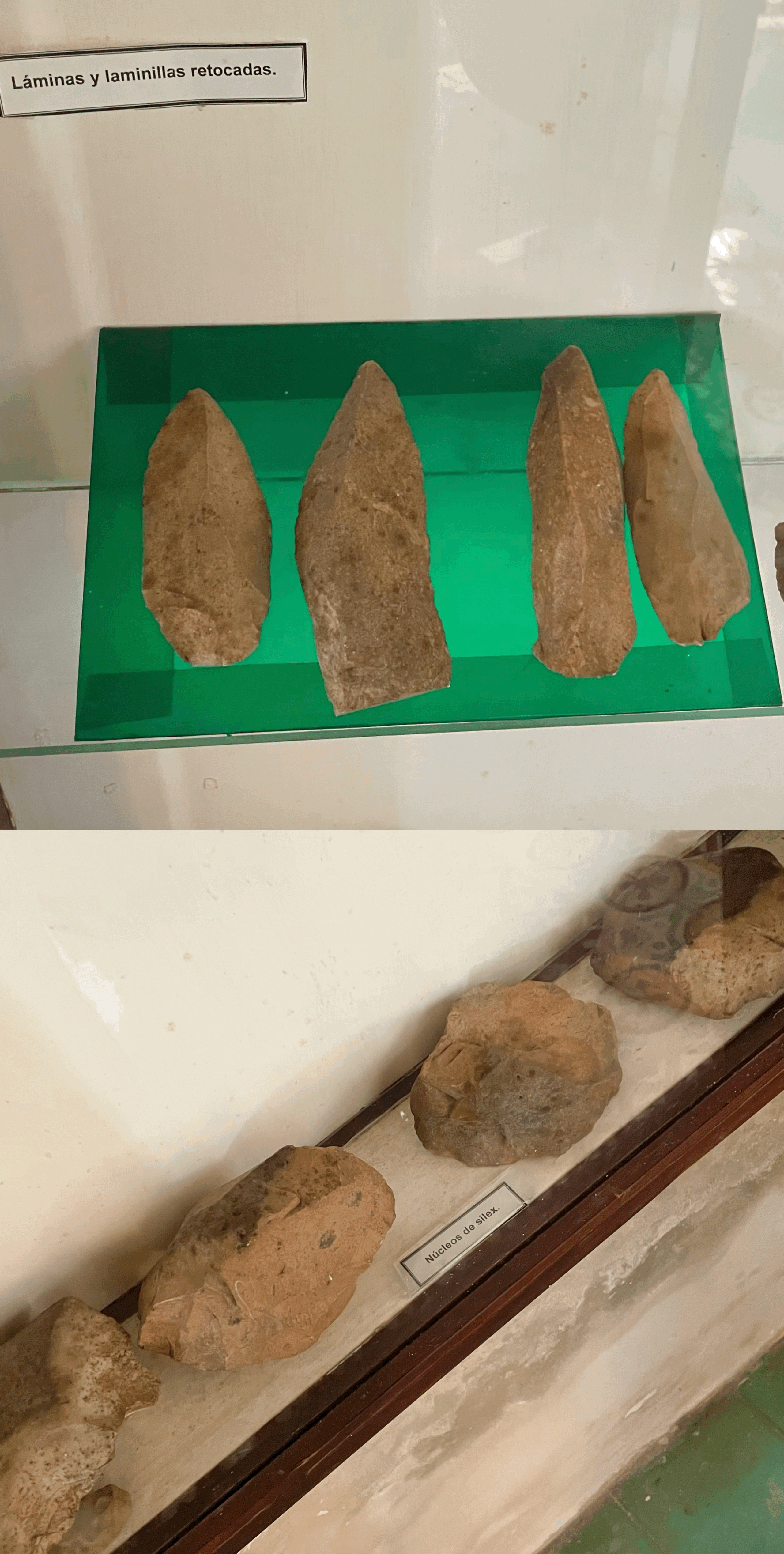

Si tienes la oportunidad, te recomiendo visitarlo y sumergirte en su fascinante historia. 🏛️🌟
- Próximamente la segunda sala sobre la etapa "COLONIAL" en mi país (Parte II)
I hope you enjoyed seeing the archaeological room of my city's museum through my lens and that you enjoyed some of the aboriginal instruments.... I have tried to add images with the name and a description next to the works, so if you like them, show them your love!If you have the opportunity, I recommend you to visit it and immerse yourself in its fascinating history. 🏛️🌟 @erikah give me your opinion 🙏🏻
- Coming soon the second room on the "COLONIAL" stage in my country (Part II)
To be continued……
If you wish to visit the Simón Reyes Provincial Museum in my city, you can find it at Honorato del Castillo Street, corner Máximo Gómez.
